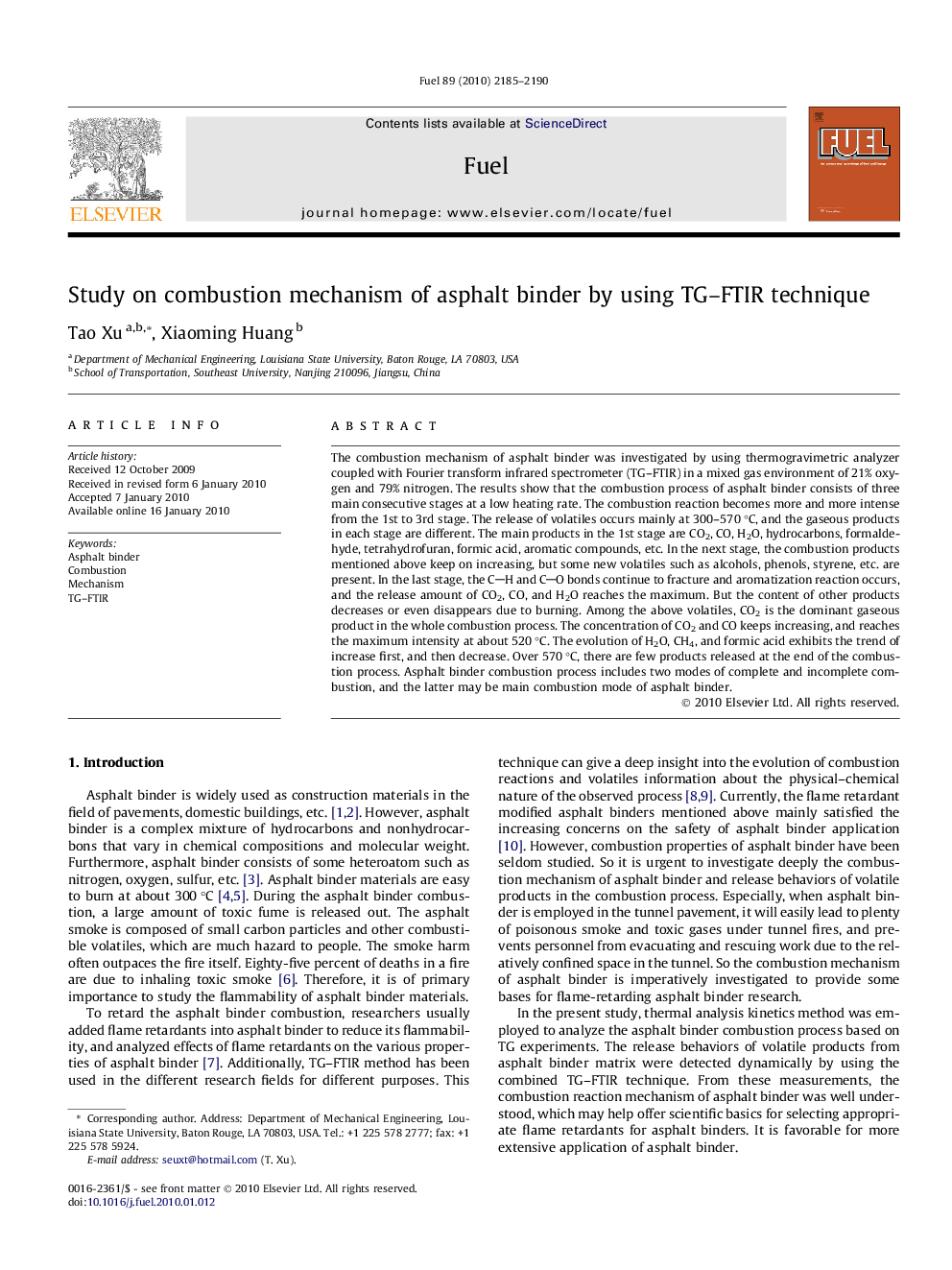| Article ID | Journal | Published Year | Pages | File Type |
|---|---|---|---|---|
| 207043 | Fuel | 2010 | 6 Pages |
The combustion mechanism of asphalt binder was investigated by using thermogravimetric analyzer coupled with Fourier transform infrared spectrometer (TG–FTIR) in a mixed gas environment of 21% oxygen and 79% nitrogen. The results show that the combustion process of asphalt binder consists of three main consecutive stages at a low heating rate. The combustion reaction becomes more and more intense from the 1st to 3rd stage. The release of volatiles occurs mainly at 300–570 °C, and the gaseous products in each stage are different. The main products in the 1st stage are CO2, CO, H2O, hydrocarbons, formaldehyde, tetrahydrofuran, formic acid, aromatic compounds, etc. In the next stage, the combustion products mentioned above keep on increasing, but some new volatiles such as alcohols, phenols, styrene, etc. are present. In the last stage, the CH and CO bonds continue to fracture and aromatization reaction occurs, and the release amount of CO2, CO, and H2O reaches the maximum. But the content of other products decreases or even disappears due to burning. Among the above volatiles, CO2 is the dominant gaseous product in the whole combustion process. The concentration of CO2 and CO keeps increasing, and reaches the maximum intensity at about 520 °C. The evolution of H2O, CH4, and formic acid exhibits the trend of increase first, and then decrease. Over 570 °C, there are few products released at the end of the combustion process. Asphalt binder combustion process includes two modes of complete and incomplete combustion, and the latter may be main combustion mode of asphalt binder.
